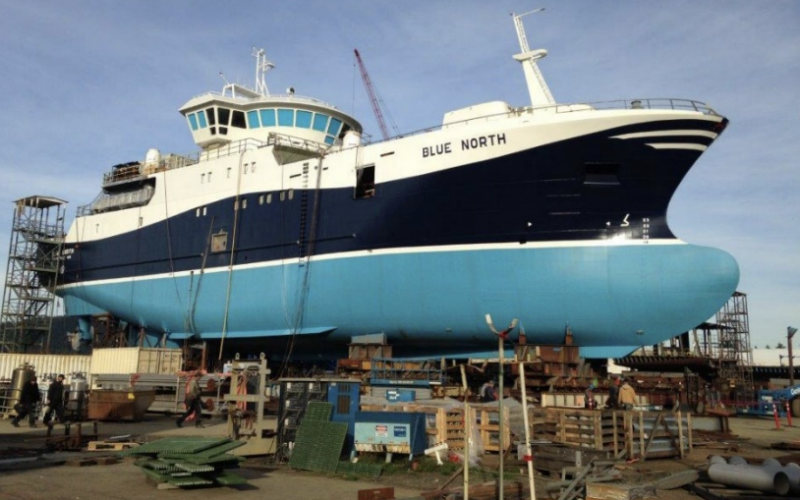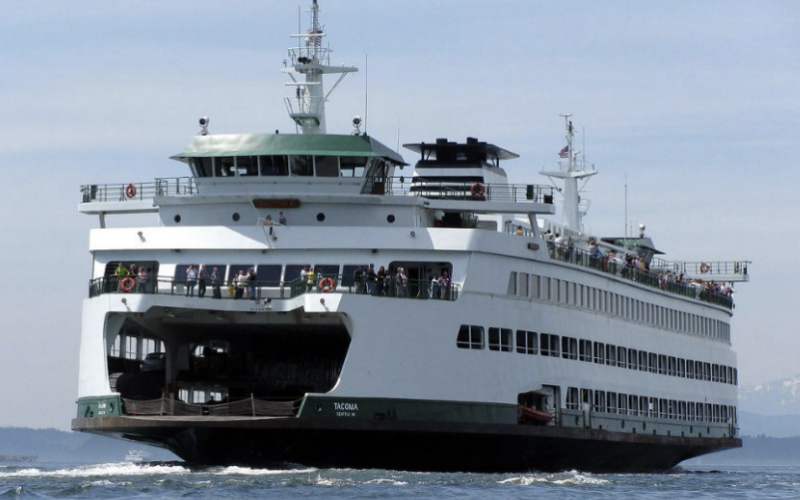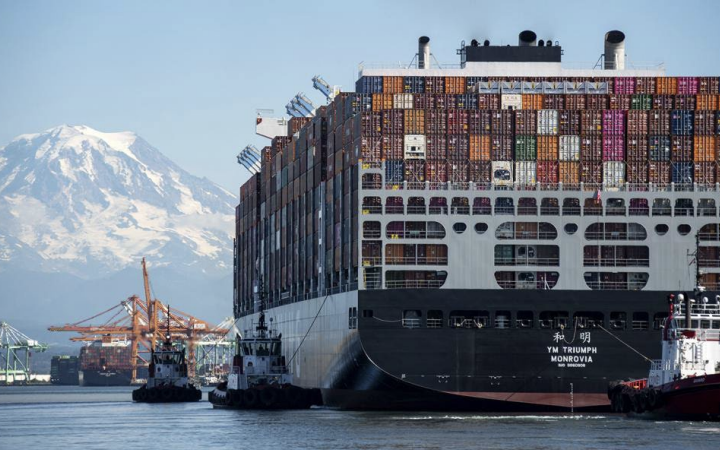A new study from the Washington Maritime Federation pegs the economic impact of the Washington State maritime industries at nearly $46 billion and more than 170,000 jobs, with maritime logistics and shipping, shipbuilding and repair, and commercial fishing and seafood production the top sectors.
“The average annual compensation in maritime-related jobs is $112,000 including benefits,” according to the federation, which released the study Nov. 9 in Seattle during the 2023 Pacific Marine Expo. “The study details an industry that is a foundation of our state's economy and a leader in innovation and sustainability.”
Titled "The Economic Impacts of Washington's Maritime Industry," the report was compiled for the federation by McKinley Research Group, in association with High Peak Strategy. The full report is available at www.maritimefederation.com.
"The maritime economy of Washington state has long provided economic prosperity to our region. Our culture of commerce and trade was built on the ports of Puget Sound," said Port of Seattle Commissioner Hamdi Mohamed. "Today this tradition continues to benefit the entire state, and indeed the country."
Overall, Washington's maritime sector contributes more than $382 million, including direct and indirect impacts to Washington State revenues.
Maritime logistics and shipping have the largest impact, with 23,500 jobs, according to the report.
Close behind is shipbuilding, repair and maintenance, with 18,500 workers employed in 61 shipyards and boatyards. By far the biggest employer is the Puget Sound Naval Shipyard in Bremerton with 13,500 civilian Department of Defense workers. Major commercial shipyards include Vigor (with locations in Seattle, Tacoma, Everett, Vancouver, and Port Angeles), Dakota Creek (Anacortes), Westport Yachts (Port Angeles), and Safe Boats (Bremerton and Tacoma).

Commercial fishing and seafood processing employed 8,300 people in annual-equivalent jobs in 2022. More than half of these jobs, some 4,650 positions, were in “seafood product preparation and packaging” which includes shoreside processing operations and crew aboard large catcher-processor fishing vessels based in Washington and largely operating in the northern waters of the Bering Sea and the Gulf of Alaska.
Waterborne transportation and mass transit are of utmost importance to the state’s economy, with Washington State Ferries operators of the largest U.S. fleet. Some 4,600 people are employed statewide in the transportation sector.
"This study speaks to the tremendous importance of the maritime industry to Washington state," said Chad See, the Washington Maritime Federation board president, and executive director of the Freezer Longline Coalition. "Maritime drives our economy, lifts up our communities and delivers our goods to consumers around the world. Through innovation, investment in our workforce, and hard work, maritime continues to deliver for our state."

The maritime industry represents a diverse workforce, from executive office positions to factory floor workers and fishermen. Maritime workers represent a wide range of skills and educational backgrounds. The most common maritime occupations in 2022 were welders, cutters, solderers, and brazers, followed by cargo and freight agents, heavy and tractor-trailer truck drivers, laborers and freight, stock, and material movers, and captains, mates, and pilots of water vessels. Many of these positions provide a living wage for workers without requiring a four-year college degree.
Washington is also a hub of maritime innovation, with dozens of local startups creating products ranging from kelp-based snacks to shipping logistics apps to new ballast water treatment systems.
As awareness of the industry's footprint on oceans and waterways has increased, Washington State industries have ramped up efforts to minimize environmental impacts, such as more efficient vessel design, reduced underwater noise impacts on wildlife, cleaner fuels and improved vessel routing.
See said the industry is positioning itself to meet future challenges with workforce development initiatives, technological innovation, and environmental stewardship. "A multitude of educational and training programs have been developed in recent years to address current and expected workforce shortages in the maritime sector, including apprenticeship programs, skill centers, and the first-ever Maritime High School in the state," he said.
"The maritime industry needs people from every single community at every level, and opportunities exist for everyone," said Ann Avary, director at Northwest Center of Excellence for Marine Manufacturing & Technology in Anacortes.
Washington state has created a statewide plan addressing the workforce maritime needs called the Washington State Workforce Development Pathway, said Avary. The state wants to raise awareness of the industry's needs including those involving boats, shipbuilding, ship repair, fishing and seafood, transportation tugs, ferries, and more.
"Training for a maritime career doesn't require a degree from a four-year college or university, so students don't have to take on a big debt load to get started. A nine-month program at the Seattle Maritime Academy can cost as little as $11,000 and put a student on a clear path to starting wages upwards of $60,000 a year, depending on the position," said Dale Bateman, associate dean of the Seattle Maritime Academy. "Even better, programs like the Seattle Promise can make tuition free.”
To learn more about maritime training programs and careers, visit
https://www.washingtonmaritimecareers.org/programs.




